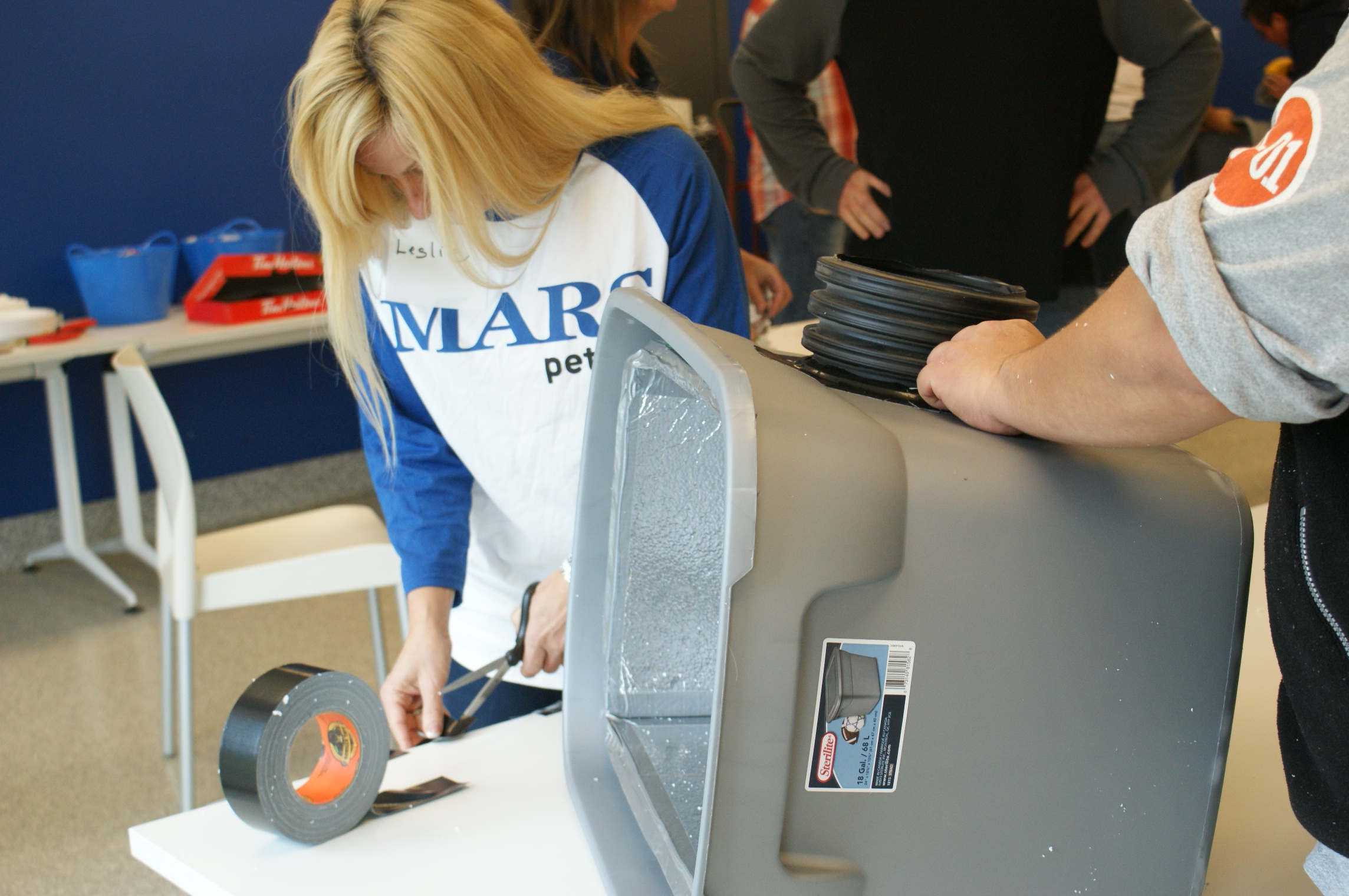How to build a feral cat shelter 101
by Ontario SPCA and Humane Society | Cat Care | February 18, 2022

The Ontario SPCA has a number of programs designed to assist community cats –more commonly referred to as feral cats – and their caregivers. Learn more here. But today, we want to share how to make a feral cat shelter of your own!
Shelters are used to give feral cats a safe, warm place during the winter. If you have feral cats in your community you may want to consider taking on this project.
Learn how to build a feral cat shelter
Supplies:
- 68L Plastic tote (or waterproof container of similar size)
- ¾ inch Durofoam sheet (4ft x 8ft)
- Duct tape
- Gorilla tape
- Measuring tape
- Exacto knife
- Sharpie pen
- Jigsaw/circular saw
- 6” diameter black tubing (or alternative material for “awning,” such as an ice cream container with bottom cut out)
- Straw – It’s very important that only straw is used in these shelters over the winter. Straw holds the least amount of moisture and provides the warmest insulation for the cats.
Feral cats are adept at finding shelter and a place to sleep out of the rain and out of sight. In warm weather, shelter is usually not a problem for them, although you can still provide them with a cozy, safe place to sleep by building them a shelter.
When the temperature drops and winter sets in, that’s when they most need your help. Without a warm, dry place to bed down, the cats can fall seriously ill. In severe climates, cats can get frostbite on their ears, nose and paws, or may perish from the elements. Providing adequate winter shelter is one of a caretaker’s primary tasks.
There are probably as many ways to build adequate shelter as there are creative caretakers. All good designs share two elements: good insulation and limited air space. Insulation is needed to trap the cat’s body heat, effectively turning the cats themselves into little radiators. The interior of the shelter should be just large enough to hold the cats and have as little empty space leftover as possible to limit the air space that needs to be heated. Both good insulation and minimum air space are needed – one without the other won’t work. The shelter design described above incorporates these two key elements of adequate insulation and as little empty space as possible. – Neighborhood Cats TNR Handbook
For detailed written instructions on building your own feral cat shelter see our DIY – Step by Step: How to Build a Feral Cat Shelter or watch the video below!
For more information on feral cat programs see:
Categories
Testimonial
We have supported the OSPCA since 1951
We have supported OSPCA since our arrival in Canada in 1951. Keep up the greatest T.L.C. for animals.
